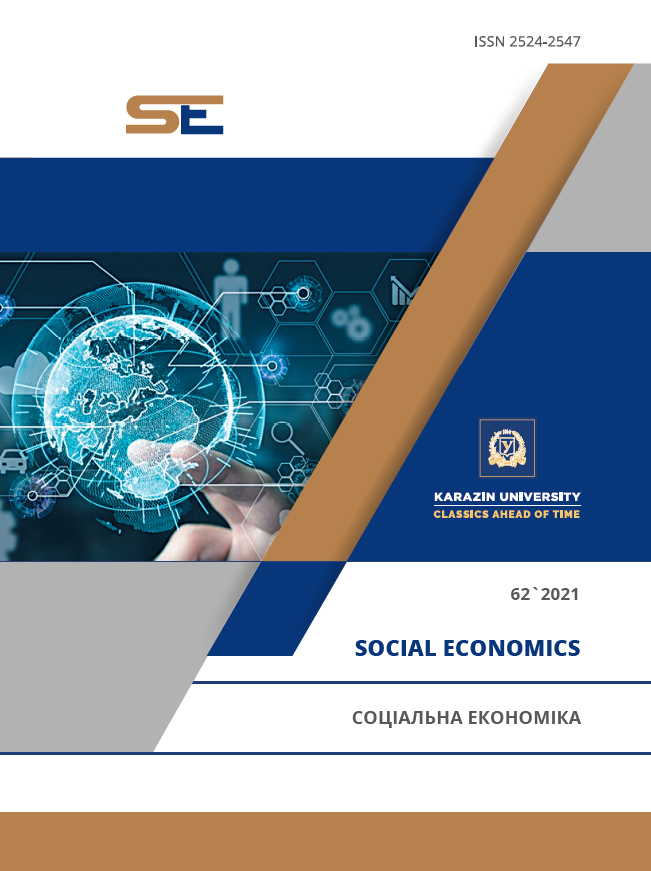FORMATION OF PRODUCTION GROWTH POINTS ON THE BASIS OF MINERAL - RAW MATERIAL RESOURCES AS A FACTOR OF IMPROVEMENT OF THE TERRITORIAL STRUCTURE OF THE INDUSTRY OF THE REPUBLIC OF KARAKALPAKSTAN
Abstract
The use of mineral resources plays an important role in the global economy. “As noted in the British newspaper“ Financial Times ”, this sector ranks 1st in the world in terms of capitalization of the largest companies, including mining itself (excluding oil and gas) - 5th place among global industries after the banking sector, oil and gas industry, pharmaceutical and computer industries"(Kondratyev, 2014). In the developed and rapidly developing countries of the world, industrial growth is achieved through the effective use of the local potential of natural resources, improvement of the structural composition of the industry. According to the World Bank, in 2018 the share of mineral resources in GDP was 0,9 percent in Canada, 3,5 percent in Australia and 2,5 percent in Brazil, while in Uzbekistan the figure was 12,3 percent (Saydaxmedov, 2020).
Many large scientific centers around the world are working on changing the methodology for the economic assessment of mineral resources, taking into account the regional economy, new economic geography, changes in the subjects of the institutional economy and the growth of knowledge that has occurred in recent years. Much attention is paid to the use of socio-economic indicators along with technical and economic indicators in assessing the mineral resource base. Consequently, due to the development of mineral resources, opportunities arise for creating new jobs, increasing the income of the population, introducing innovative ideas and technologies in practice, and creating a competitive environment in the economy. Therefore, the study of problems in this area in connection with the social sphere and institutions acquires the necessary scientific significance.
The article discusses the formation of points of production growth. The main directions of the formation of points of production growth based on mineral-raw material resources are being studied. The distribution of mineral-raw material resources by zones of Karakalpakstan is investigated. In addition, the article talks about the specific features of the formation of reference points of growth. The stages of the formation of growth support points based on the local mineral-raw material resources of Karakalpakstan in 2020-2030 are also considered.
Downloads
References
Kondratyev, V. B. (2014). Mineral resources as a factor of economic growth and global competitiveness. Mining, 1(113), 6. (in Russian)
Saydaxmedov, Kh. (2020). Improvement of methodological approaches to assessing the mineral resource potential of the country's regions. Economy: Analysis and forecasts, 7-8(11), 119-123. (in Russian)
Mirzaev, I. K., & Jabbarov, K. Yu. (2017). Issues of innovation in improving the effectiveness of anti-crisis programs. Economy and Finance (Uzbekistan), 9. Retrieved from https://cyberleninka.ru/article/n/i-tisodiy-in-irozga-arshi-dasturlarning-samaradorligini-oshirishda-innovatsiyalarning-zhoriy-etilishi-masalalari. (in Uzbek)
Vertakova, Yu., Grechenyuk, O., & Grechenyuk, A. (2016). Identification of clustered points of growth by analyzing the innovation development of industry. Procedia Economics and Finance, 39, 147-155.
Reavsky, S. V., & Isachenko, Yu I. (2015). Features of the formation of growth points in the industrial region. Regional economics: theory and practice, 3, 2-14. (in Russian)
Varnavsky, V. G. (2019). Globalization and structural changes in world production. World Economy and International Relations, 63(1), 25-33. (in Russian)
Soliev, A. S., & Yanchuk, S. L. (2005). The distribution of productive forces and the polarized development of the economy of the Republic of Uzbekistan. Tashkent.
Bertrand, G., Cassard, D., Arvanitidis, N., Stanley, G., & the EuroGeoSurvey Mineral Resources Expert Group. (2016). Map of critical raw material deposits in Europe. Energy Procedia, 97, 44-50.
Shi-hong, Zh., Ke-yan, X., Jian-ping, Ch., Jie, X., Ning, C., & Xiao-nan, W. (2019). Development and future prospects of quantitative mineral assessment in China. China Geology, 2, 198-210.
Egamberdiyev, F., Bobokhodjaev, S., Zakhirova, G., & Olimjanova, Sh. (2020). Methodological bases and forms of interrelations of development of world economy and competitiveness of regional economy. International Journal of Psychosocial Rehabilitation, 24(01), 1044-1059. doi: https://doi.org/10.37200/IJPR/ V24I1/PR200301.
Muminov, N., Hoshimov, P., Muxitdinova, N., & Umarov, O. (2020). Investment cooperation in the conditions of globalization: problems and prospects for the development. International Journal of Psychosocial Rehabilitation, 24(01), 1950-1953. doi: https://doi.org/10.37200/IJPR/V24I1/PR200301.
Henckens, M.L.C.M., Ierland, E.C. van, Driessen, P.P.J., & Worrell, E. (2016). Mineral resources: Geological scarcity, market price trends, and future generations. Resources Policy, 49, 102-111.
Kaluzaa, A., Lindow, K., &Stark, R. (2018). Investigating challenges of a sustainable use of marine mineral resources. Procedia Manufacturing, 21, 321-328.
Henckens, M.L.C.M., Driessen, P.P.J., Ryngaert, C., & Worrell, E. (2016). The set-up of an international agreement on the conservation and sustainable use of geologically scarce mineral resources. Resources Policy, 49, 92-101.
Dubiński, J. (2013). Sustainable Development of Mining Mineral Resources. J. Sust. Min., 12(1), 1–6.
Yeshimbetov, U. Kh., Jabbarov, K. Y., & Umarov, O. O. (2019). The development of the mining industry - the basis for increasing the competitiveness of the regional economy. Issues of Economics and Management, 4(20), 37-39. (in Russian)
Ruzmetov, B. (2017). Intersectoral clusters and their influence on the growth of competitiveness of the regional economy. Monograph. T.: "Lesson Press". (in Russian)
Leksin, V. N. (2009). To the methodology of research and regulation of the processes of territorial development. Region: Economics and Sociology, 3, 19-40. (in Russian)
Leshcheva, T. O. (2008). The formation and activation of the poles of economic development in the region. (Doctoral dissertation). St. Petersburg. (in Russian)
Yeshimbetov, U. K., & Jabbarov, K. Y. (2018). The formation of points of production growth based on mineral-raw material resources as a factor in increasing the competitiveness of the region. Competitive economy and directions of its implementation: materials scientific. conf. T.: NUUz. (in Russian)




